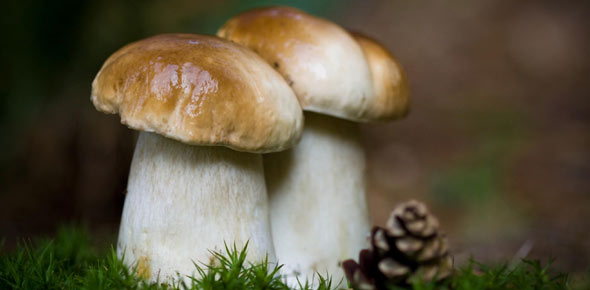Symbiosis - Mutualism

This quiz will test your understanding on mutualism.
Questions and Answers
- 1.
Mutualism is any relationship between two species that benefits both species.
- A.
True
- B.
False
Correct Answer
A. TrueExplanation
Mutualism refers to a type of relationship between two species where both species derive benefits. In this symbiotic interaction, both organisms gain advantages such as food, shelter, protection, or reproduction. This mutualistic relationship is characterized by cooperation and interdependence, where each species contributes to the well-being and survival of the other. Therefore, the statement "Mutualism is any relationship between two species that benefits both species" is true, as it accurately describes the nature of mutualistic relationships.Rate this question:
-
- 2.
Which of the following is not a mutualistic relationship?
- A.
Resource - resource
- B.
Service - resource
- C.
Service - service
- D.
None of the following
Correct Answer
D. None of the followingExplanation
The question asks for a relationship that is not mutualistic. A mutualistic relationship is one where both parties benefit from the interaction. In the options given, "resource - resource" and "service - resource" both involve an exchange of resources or services between two entities, indicating a mutualistic relationship. "Service - service" is not explicitly defined, but it can be inferred that both parties would be providing services to each other, suggesting a mutualistic relationship as well. Therefore, the correct answer is "none of the following" because all the options listed represent mutualistic relationships.Rate this question:
-
- 3.
Mycorrhizal relationship is an example of _______ relationship.
- A.
Service - service
- B.
Resource - resource
- C.
Service - resource
Correct Answer
B. Resource - resourceExplanation
The correct answer is "resource - resource" because mycorrhizal relationship is a mutualistic symbiotic relationship between certain fungi and the roots of plants. In this relationship, the fungi provide the plants with essential nutrients, such as phosphorus and nitrogen, which are often limited in the soil. In return, the plants provide the fungi with carbohydrates produced through photosynthesis. Both the fungi and the plants benefit from this exchange of resources, making it a resource-resource relationship.Rate this question:
-
- 4.
How do fungi benefit plants?
- A.
Helps to absorb phosphate ions
- B.
Helps to absorb water
- C.
Helps to remove waste
Correct Answer
A. Helps to absorb phosphate ionsExplanation
Fungi benefit plants by helping them absorb phosphate ions. Phosphate ions are essential for plant growth and development, as they are a key component of DNA, RNA, and ATP. However, phosphate ions are often present in soil in insoluble forms that are not readily available to plants. Fungi form symbiotic relationships with plant roots, forming structures called mycorrhizae, which enhance the plant's ability to absorb phosphate ions by breaking them down into a soluble form that can be easily taken up by the plant. This helps plants obtain the necessary nutrients for their growth and overall health.Rate this question:
-
- 5.
Pollination is a _________ relationship.
- A.
Service - service
- B.
Resource - resource
- C.
Service - resource
Correct Answer
C. Service - resourceExplanation
Pollination is a service-resource relationship because pollinators, such as bees or butterflies, provide the service of transferring pollen from the male part of a flower to the female part, which is essential for fertilization and reproduction. In return, the pollinators receive resources like nectar or pollen as food sources. This mutualistic relationship benefits both the pollinators and the plants involved, ensuring their survival and reproduction.Rate this question:
-
- 6.
Anemones and anemonefish are examples of __________ relationship.
- A.
Service - service
- B.
Resource - resource
- C.
Service - resource
Correct Answer
A. Service - serviceExplanation
Anemones and anemonefish have a mutualistic relationship where both species benefit from each other. The anemone provides shelter and protection for the anemonefish, while the anemonefish defends the anemone from predators and parasites. This interaction is a classic example of a service-service relationship, as both organisms provide a valuable service to each other.Rate this question:
-
- 7.
More than __% of land plants rely on mutualistic relationships with fungi for certain resources.
- A.
50
- B.
60
- C.
70
Correct Answer
C. 70Explanation
The correct answer is 70 because a majority of land plants have a mutualistic relationship with fungi. This mutualism, known as mycorrhizae, involves a symbiotic association between plant roots and fungal hyphae. The fungi help the plants by enhancing nutrient uptake, particularly phosphorus, while the plants provide the fungi with carbohydrates. This relationship is essential for the survival and growth of many plant species, making it a crucial aspect of terrestrial ecosystems.Rate this question:
-
Quiz Review Timeline +
Our quizzes are rigorously reviewed, monitored and continuously updated by our expert board to maintain accuracy, relevance, and timeliness.
-
Current Version
-
Mar 22, 2023Quiz Edited by
ProProfs Editorial Team -
Sep 16, 2009Quiz Created by
L-ionel
- Anatomy Quizzes
- Bacteria Quizzes
- Bio Quizzes
- Biological Evolution Quizzes
- Biology Exam Quizzes
- Biology Test Quizzes
- Cell Quizzes
- Cell Biology Quizzes
- Chapters Of Biology Quizzes
- Classical Conditioning Quizzes
- Conservation Biology Quizzes
- Enzyme Quizzes
- Fungi Quizzes
- Immunology Quizzes
- Marine Biology Quizzes
- Mitosis And Meiosis Quizzes
- Molecular Biology Quizzes
- Parasitology Quizzes
- Physiology Quizzes
- Prokaryote Quizzes
- Protist And Fungi Quizzes
- Protozoa Quizzes
- Respiratory Quizzes
- Spine Quizzes
- Stem Cell Quizzes
- Taxonomy Quizzes
- Traits Quizzes
- Ultimate Biology Quizzes
- Virus Quizzes
- Zoology Quizzes
 Back to top
Back to top


